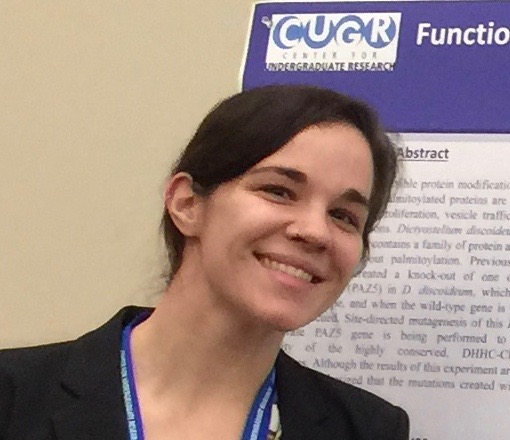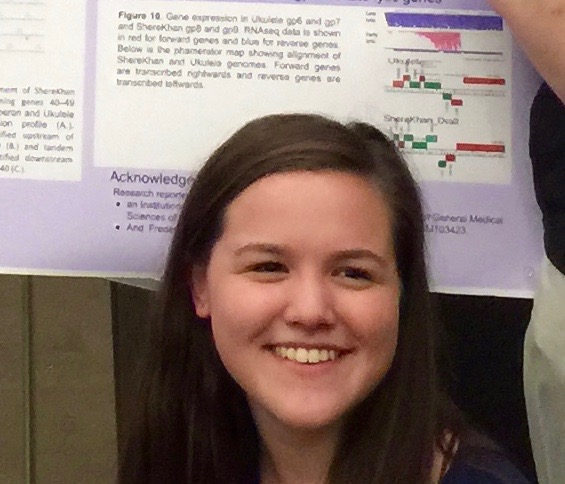Below is a summary of the abstract you submitted. Presenting author(s) is shown in bold.
If any changes need to be made, you can modify the abstract or change the authors.
You can also download a .docx version of this abstract.
If there are any problems, please email Dan at dar78@pitt.edu and he'll take care of them!
This abstract was last modified on May 5, 2017 at 5:46 p.m..

Bacteriophage, generally, and Actinobacteriophage, specifically, offer a wide array of genetic and biological diversity. And so it is with the phage isolated, sequenced and annotated this year at The University of Maine. Our phage span the spectrum of size and GC content, host range and mechanisms of lysogeny.
SallySpecial is a Gordonia phage belonging to cluster DM, a newly formed cluster containing only one other member, Emperor. The SallySpecial genome is remarkably short for a tailed phage, only 15,896 bp and encoding 23 putative genes. The genome has extremely high GC content, 70.14% and a codon usage pattern consistent with that of its isolation host, Gordonia terrae. It is a true phage minimalist in that all but three of its genes, whose functions are unknown, have predicted functions necessary for either lytic or lysogenic functions. SallySpecial can form lysogens and is predicted to have an integration-dependent repressor. The attP site was identified in the 3′ end of the repressor gene and is nearly identical to a 46-bp sequence in the 3′ end of a lysine tRNA gene in the genomes of G. terrae and in numerous other species of Corynebacterium, Rhodococcus and Nocardia.
Cuke was isolated using Mycobacterium smegmatis as the host, but we suspect that M. smegmatis is not it’s normal host. Cuke is a singleton, most closely related to the R Cluster phage. It has a genome size of 68,869 bp and 135 putative genes including 2 tRNA genes. It is a circularly permuted phage and has a GC content of 49.1%, the lowest of any phage isolated using M. smegmatis as a host. It’s codon bias does not match that of the host. Not surprising Cuke grows poorly on M. smegmatis. Analysis of codon usage suggests another member of the phylum Actinobacteria, possibly Corynebacteria may be the normal host.
The novel Gordonia phage, Flapper, belongs to cluster CR and has a genome length of 67,527 bp with 96 predicted genes. Flapper forms lysogens in the host G. terrae, but there are no genes in the Flapper genome that encode for obvious lysogeny related functions such as an integrase or parAB proteins. A gene cassette immediately downstream of the lysis cassette contains genes with functions that could be related to lysogeny, including gp57. The gp57 predicted protein structure aligns well with a phage or plasmid associated DNA primase. It’s possible that Flapper uses a novel mechanism to maintain lysogeny.
The host range of all three phage was determined on M. smegmatis, M. chelonae, M. marinum, and G. terrae. The phage were only able to infect their original isolation host. Given the codon usage of Cuke and SallySpecial and putative attB site for SallySpecial in genera outside of Gordonia, we will be performing host range experiments in species of Corynebacterium and Rhodococcus.


